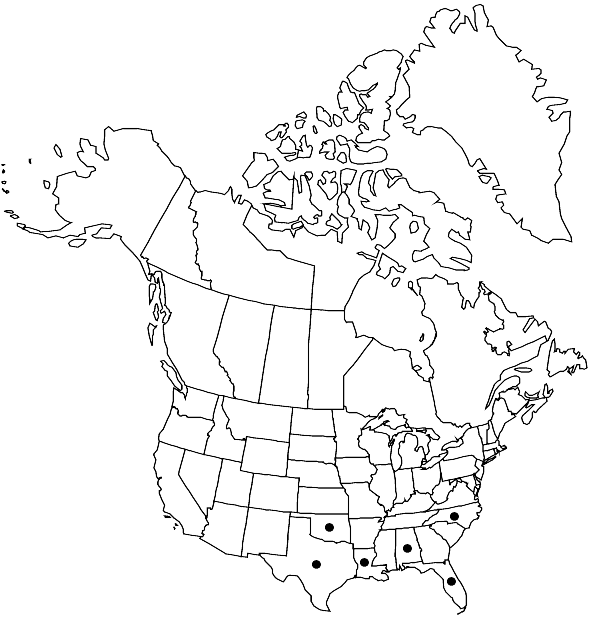Fissidens scalaris
J. Linn. Soc., Bot. 12: 596. 1869,.
Plants 1.5–6 × 1 mm. Stem unbranched and branched; axillary hyaline nodules present; central strand present. Leaves as many as 16 pairs, oblong to lanceolate, acute to short-acuminate, to 1.3 × 0.25 mm; dorsal lamina narrowed proximally, ending well above or at insertion; vaginant laminae ± 4/5 leaf length, ± equal, minor lamina ending on or near margin; margin ± entire to crenulate-serrulate, limbate on all laminae, limbidium variable, developed best on vaginant laminae, ceasing well before apex, limbidium cells 1-stratose; costa ending 2–5 cells before apex to percurrent, bryoides-type; laminal cells 1-stratose, distinct, smooth, somewhat bulging, firm-walled, irregularly quadrate to hexagonal, 9–14 µm, increasing somewhat in size and ± oblong in proximal parts of vaginant laminae. Sexual condition rhizautoicous; perigonia gemmiform, proximal to fertile and infertile stems, and as branches along horizontal parts of stems. Sporophytes 1 per perichaetium. Seta 2–6 mm. Capsule theca exserted, erect, radially symmetric, 0.5–1.25 mm; peristome anomalous, variable, even in same theca, teeth undivided, imperfectly divided or divided 4/5 their length, papillose distally, smooth proximally; operculum 0.22–0.3 mm. Calyptra cucullate, smooth, to 0.45 mm. Spores 20–26 µm.
Habitat: Bare, disturbed soil of stream banks and roadsides, loess banks, often more or less buried
Distribution

Ala., Fla., La., N.C., Okla., Tex., South America
Discussion
Fissidens scalaris, although widespread in the southern part of the United States, is infrequently collected. It is best distinguished by its dimorphic stems and undivided to deeply divided, papillose peristome teeth. B. E. Lemmon (1965) published photographs of the development of plants, including perigonial, perichaetial, and infertile stems, and peristome.
Selected References
None.
Lower Taxa
No values specified."/5" is not declared as a valid unit of measurement for this property.